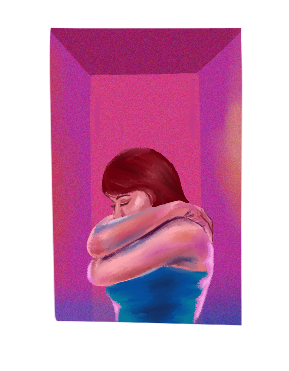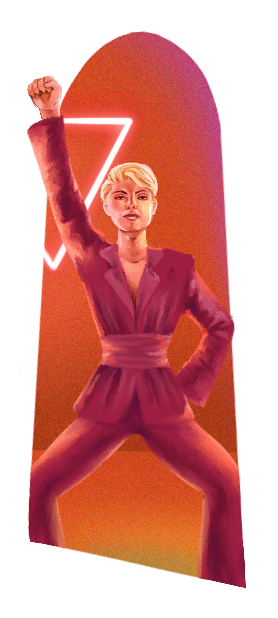Same-sex marriage may not be legal in South Korea yet but a recent landmark court ruling that recognized a same-sex couple’s right to spousal benefits has set a precedent for how future LGBTQIA+ rights cases are decided.
The Korea Times reports that the Seoul High Court ruled in favor of a gay couple calling for equal health insurance coverage for same-sex couples on Feb. 21. The ruling overturned a lower court’s decision and ordered the National Health Insurance Service (NHIS) to cancel its decision to withdraw So Seong-wook’s eligibility to receive spousal health insurance benefits as the enrolled dependent of his longtime partner Kim Yong-min.
Although So and Kim aren’t recognized as common-law partners, the court viewed the NHIS’ decision as discrimination based on sexual orientation considering how the state health insurance program provides spousal benefits to civilly married heterosexual couples.
JUST IN: The Seoul High Court delivered a #landmark #ruling that recognizes same-sex marriage. This is a major victory & sets key precedent for #LGBTQ+ Rights in Korea🌈🎉#lovewins pic.twitter.com/cYJKXuzlN9
— The Korea Times (@koreatimescokr) February 21, 2023
So and Kim held their wedding ceremony in 2019. In February 2020, Kim was able to register So as his dependent under the employer-based health insurance program, the first known case of a same-sex couple being able to do so. However the NHIS reversed its decision, calling it an “administrative error.”
The couple first filed an administrative lawsuit against the NHIS in January 2021 but lost. The initial ruling by the Seoul Administrative Court stated that matrimony in South Korea is still considered a union between a man and a woman. So and Kim appealed the ruling which led to this week’s major victory.
“Today’s ruling showed that love conquers discrimination and hatred. I feel happy that the struggles and discrimination faced by many sexual minorities in Korea have become visible through the ruling. We are taking small steps towards equality,” So said at a press conference. His partner Kim added, “Our rights have been finally recognized in the legal system.”
So’s legal representative Park Han-hee affirmed this: “The court must have taken into account that same-sex couples are not fundamentally different from heterosexual couples and thus excluding them from state benefits is unconstitutional.”
Outside the court, LGBTQIA+ rights advocates joined the couple, holding rainbow flags and placards with the words love, equality, family, and happiness on them.
Here’s to hoping that this brings South Korea and neighbouring countries like ours significantly closer to legalizing same-sex marriage.
Photo by Paran Koo on Unsplash
Follow Preen on Facebook, Instagram, Twitter, TikTok, YouTube, and Viber
Lovi Poe’s been in the industry for 15 years and in that span she’s carved a multi-faceted career as a primetime leading lady, an indie sweetheart, a recording artist, and an executive producer. Starring alongside Carlo Aquino in “Seasons,” Poe shows us she’s not afraid to pursue her own stories and to follow her heart at this point.
In an interview with the Lifestyle Inquirer’s August cover girl, we were able to talk about her previous roles, the girl best friend trope, red flags, and what scene had her crying non-stop in “Seasons.”
View this post on Instagram
“Seasons” is your indie comeback following the sapphic love story “Sleep With Me.” Their releases sort of bookend the premieres of your primetime teleseryes “Flower of Evil” and “Ang Probinsyano.” Do you consciously try to balance out your filmography when you choose your projects?
I just want to be able to explore more different characters. I think, right now, I’ve become a bit more picky of what’s really worth my energy.
And so I’ve been truly blessed to be able to work on something like “Sleep With Me” because it’s something that’s very different. I’m just happy to be part of something like that. “Flower of Evil” is another one that’s really something that I was excited about because it’s a Korean drama remake. I’ve never done a remake.
I’ve done a lot of different characters in the past that I’m very proud of. But then, I’ve done a lot of love affair movies. Every time I get offered another one, I’m just like, “I can’t do this.”
[In] Filipino dramas it’s always loud, strong, nagsasabunutan, [and] we’re slapping each other. Of course it does happen, getting physical. But it’s nice to do roles wherein we show inner strength because I feel like most people have that in real life.
“Seasons” was your brainchild. What inspired it?
I do believe that people that come into our lives and some people are there for only seasons. Some people are there to teach you and give you reasons that make you learn. And then eventually, if you get lucky, then you get to meet someone that could be your lifetime partner.
That’s why I came up with a story. And I also wanted a story that would remind us that we have to be careful who we take for granted. The person that you’ve been searching for may have been there already this whole time and you’re just not looking.
I’m not saying I’m Charlie but I’m sure people try to categorize all their relationships. I wonder who would fall under seasons, who would fall under reasons, and eventually, you would know who would fall under lifetime.
Your “Seasons” character Charlie follows in the footsteps of so many fictional Pinoy girl best friends like Carson of “I’m Drunk, I Love You” or Bujoy of “Labs Kita… Okey Ka Lang?” When is it okay to pine for your best friend and when is it time to snap out of it?
I haven’t seen these movies. I feel so bad. But I feel like it would be best to snap out of it if it’s not reciprocated.
I have two friends who have made it, you know. They’re best friends and they’re together. And that’s like the best thing. They always say that you should marry your best friend. If life was that simple then why not, right? But there’s so many factors that you have to consider.
You sang two tracks in the film’s soundtrack. Can you tell us about them and what it was like recording them and performing in the film?
I enjoyed singing “Panaginip” because I wanted to sing it with a smile on my face as if it wasn’t about to happen. The ending wasn’t going to be that way so that for me was fun. And “Lifetime” for me is a wedding song. But it’s not my wedding song. I felt really sad because I was singing it for my best friend Kurt. I remember shooting that scene and my director specifically told me, “Don’t cry in this scene, okay?” I was like, “Okay, I’ll try.” But when they started playing the song, I just couldn’t stop crying.
I could see Carlo [Aquino] walking down the aisle and I was just, like, “Oh, no.” My tears started falling and I couldn’t stop myself. When he looked at me and said, “I love you and thank you,” I swear to god I responded to that. They had to probably cut it out because it wasn’t [in the movie.]
Then my director, when it was my own shot, started feeding me stories about Charlie and Kurt out loud. I started crying even more and I was like, “Akala ko ba ayaw mo ‘kong paiyakin? Why are you saying these things?” I couldn’t get through the scene without crying.
[Asia’s Got Talent alum] Gwyneth Dorado wrote the song. She read the script and wrote the song. If you listen to the lyrics, there’s a part that’s like, “We don’t have to rush, dear, because we have a lifetime.” Then all of a sudden towards the end, [it’s] “We don’t have to rush, dear, because you have a lifetime.” Suddenly you’re talking about him with someone else. It was very sad for me.
View this post on Instagram
Here are some quick-fire questions. Best thing about Harry from “Sleep With Me”? And Kurt?
Oh my god. Harry has the most positive outlook sa life. She did not dwell on her condition. She remained positive and she just kept going. I think that’s the most endearing characteristic of Harry.
And Kurt is always there. Even if he left [Charlie] for like, a few years, I know that he was. And he never took advantage of Charlie. He was also very supportive even if Charlie was a bit, you know, crazy sometimes.
How about Tanggol from “Batang Quiapo”?
He defends the people that he loves. He’s always there for them. As in, like, kamatayan na—as long as you don’t hurt my family, my girl, everyone that he loves. Talagang he’s gonna fight for them.
What’s Charlie’s red flag?
She’s very impulsive. She does not think before she does anything. Trust me, I know, because there are some scenes that aren’t [in the movie].
What’s Kurt’s red flag?
Can I just share? We had this discussion, Carlo and I. He was saying that after we filmed, he wasn’t in love with Charlie. But when we first finished filming, he suddenly realized that he was in love with Charlie but the moments passed. These two people fell in love with each other. But it was [at] a different time. If that’s the case, his red flag is he didn’t say what he wanted to say.
If that’s the case, then maybe Charlie—wow, nag-defend kasi ako si Charlie?!—Then Charlie would have realized sooner that maybe it is Kurt this whole time, to save them from all the stress as in-denial characters.
The fact that he was probably also so inconsiderate about Charlie’s feelings. How dare you ask her to sing at your wedding? Dude, I mean, come on.
Photo by JT Fernandez, assisted by Anton Sarte
Follow Preen on Facebook, Instagram, Twitter, TikTok, YouTube, and Viber
Buying a magazine off the rack and the thrill that comes with it used to be staples in many mall excursions and convenience store stops by teens. Those glossy pages were once the main arbiters of cool and owning issues was something of a status symbol.
Luckily for those who miss physical copies of local youth magazines, Twitter page Magasin Archive (@glossyarchive) is reminding us what our first loves looked like—and what they look like now without rose-colored glasses.
Magasin Archive is run by 27-year-old writer, editor, and youth culture columnist Fiel Estrella who’s had bylines in titles like our sister brand Scout. It features scans from Estrella’s personal collection of mostly Filipino youth and culture magazines from the ’90s, 2000s, and new ’10s.
With Estrella’s editorial eye and penchant for weaving fun personal anecdotes and clever present-day parallels into the posts, Magasin Archive offers more than just blasts from the past. It is also a space to really digest what we’ve lost (like obsolete tech and late celebrities) and examine where we’ve grown (stepping away from orientalism) or declined (fewer pieces from affordable local labels in fashion spreads).
We sat down with Estrella to talk about Magasin Archive’s genesis and what running the account has made her realize about our local Y2K pop culture zeitgeist and publishing scene.
Tell us a bit about Magasin Archive and your journey into serious magazine collecting.
I’m a fan of sassyscans on Tumblr and thankyouatoosa on Instagram—two accounts that post scans from American teen magazines from the ’80s to the early 2000s. In January this year, I was looking through my things and found a collection of pages torn out of magazines like Teen Vogue and Nylon [as well as] piles of Candy and Seventeen issues lying around. I realized that nobody’s really doing that for American mags from the 2010s and, more importantly, Filipino teen magazines. So I thought it would be cool to start an archive of sorts.
I have a lot of magazine origin stories. My uncle worked at Mega so he always brought home copies of Meg for us. The first magazine I discovered for myself was the first issue of W.I.T.C.H. at a supermarket. As for Candy, I would “borrow” (read: take without permission) from my Ate’s stash when I was 8 years old.
🇺🇸 teen vogue profiles up-and-comer tom sturridge, 23 (december 2009-january 2010) pic.twitter.com/BacfUJqqqc
— magasin archive (@glossyarchive) September 9, 2022
But I started taking it seriously—religiously visiting newsstands at the beginning of every month and becoming a Booksale and Filbar’s regular—in 2005 when I was 11. It’s a wonderful memory to come back to: figuring out your own tastes, learning about all these interesting things and people, developing your own opinions on which titles were worth tucking away your allowance for month after month.
I looked up to the editors of the magazines I read so much and I’m so happy they decided to share so much of their process and team dynamic with readers in their letters and behind-the-scenes stuff. I’m lucky I wound up working in publishing myself, because it meant that I got to cross paths with a lot of them.
quiz: how jologs are you? (seventeen, july 2001) pic.twitter.com/7V2IITq4lO
— magasin archive (@glossyarchive) September 2, 2022
The collection I have right now doesn’t actually have any of the original issues of Filipino titles that I had as a kid through to my teens—I’d let go of them when I was foolish and thought I’d outgrown them. About five years ago, I entered a phase where I would look on eBay or Carousell for old copies of all my favorites growing up, and I came across a listing for dozens of the rarer early 2000s issues at a decent price. Currently my collection of magazines has grown to about 80 issues.
What are your fave titles and what’s your most prized issue?
My holy trinity is Candy, Seventeen, and Meg—they each mean a lot to me for different reasons. [But] my most prized issue is an issue of Sassy magazine from October 1989—it has a yellow cover, the cover line only says “Exactly” in bright red and all caps, and it has an interview with River Phoenix!
camera ads in teen philippines introduce the benefits of “going digital” (december 2001) pic.twitter.com/CFstgSWlJJ
— magasin archive (@glossyarchive) September 4, 2022
When it comes to local titles, you’ll have to pry my copies of Teen Philippines from my cold dead hands because it’s so rare and short-lived and I’m always wondering why it had to fold so early.
14-year-old anne curtis shares her favorite things (candy, november-december 1999) pic.twitter.com/VeIBFRUny3
— magasin archive (@glossyarchive) September 25, 2022
I also recently bought my first and only 1999 copy of Candy, so that was pretty cool. And my little pile of Meg issues pre-supersizing when it was only 5×7 inches.
What’s the biggest deciding factor for you when purchasing an issue?
The local secondhand magazine market is a little bit less affordable these days (issues go for as much as P500), so I’ve had to pace myself lately. I’ve been focusing on issues from 2004 and earlier because beginning 2005, I found that I’m less compelled by the styling and the design because late 2000s maximalism and “recessionista” fashion was taking over and it looks a little tacky, to be honest (laughs).
stylist and fashion editor anne bella recalls the shoot for this massive 12-page spread: done guerilla-style on manila streets with no permits, photos post-processed to get the lomo effect years before it was cool. i am truly obsessed with this one.
🔗 https://t.co/mKvwRRewSB pic.twitter.com/HhmHmPC0nd
— magasin archive (@glossyarchive) September 22, 2022
Aside from the publish date, I look at the cover person. It really is helpful that magazines used to be so in-your-face with their cover lines when it comes to features and celebrities. Right now though, I’m most interested in documenting fashion editorials (when I never paid them any mind as a kid), so I try my best to find issues with really good ones.
headcanon: these belong in the @IDILYmovie universe, obviously pic.twitter.com/aWrrUk0Bh7
— magasin archive (@glossyarchive) September 2, 2022
Which artists or brands do you think encapsulate Y2K in the Philippines best?
Going through all of these magazines made me realize how somewhere along the way—probably when imported brands began to take over malls with supersized stores and especially when online shopping became more common—I stopped paying attention to whether certain local brands were still around: Human, Pink Soda and Blue Soda, Bayo, YRYS, even Kamiseta and Kashieca. It was slightly bittersweet to see how magazines really championed these homegrown brands in their editorials, which you don’t really see now.
“prepped for school” shot by toto labrador, on location at be connected internet cafe (meg, june 2002) pic.twitter.com/I16PuVGsvP
— magasin archive (@glossyarchive) September 1, 2022
If there’s one shop that I could visit again that I think encapsulated the era perfectly and was ahead of its time, it would be Anonymous: minimalist showroom, cool and flattering gender-neutral clothing, fun and functional little knick-knacks like candy and storage items. Come back!
If you could go back in time and do a celebrity interview for one of the titles, which celeb would you pick and why?
Oh, there are so many. The hosts of Disney Buzz. Mandy Moore in her Penshoppe era (which coincided with her queen-of-teen-movies era). Amanda Griffin because she owned real estate on every magazine cover. Sandara Park. Lalaine Vergara-Paras. Kitchie Nadal (maybe a joint bestie interview with Barbie Almalbis, who I’ve been lucky enough to have actually interviewed). And, of course, Rico Yan.
rico yan gives two whole pages’ worth of valuable boy advice (candy, december 2000) pic.twitter.com/iX21yiBYnq
— magasin archive (@glossyarchive) September 19, 2022
You’ve tweeted about how teen mags and matinee idols seemed to have an obsession with fangs and fetishes at the time. What other weird and surprising details have you come across?
Not all of these pages have aged gracefully for sure. I’ve been so excited about sharing certain celebrity interviews, for example, and then I’d do research on the subjects and find out that their lives or reputations have taken a turn, you could say.
the one issue i've found also proves that some fashion editorials age better than others 💀 (although i do love the use of the manila orchidarium as a location) pic.twitter.com/X0654rUqiV
— magasin archive (@glossyarchive) September 23, 2022
I always laugh to myself when I find fashion pages that fall under the era’s obsession with “oriental” styling and the title would always be something like “Turning Japanese.” “Hard-hitting” pieces exaggerated the effects of smoking pot, anti-abortion sentiments were more common, and stories like “I thought I was gay” presented the idea of sexuality as more scandalous than it is. But a lot of them were written with a lot of care and objectivity, and I still think they’re such important snapshots of the problems teens faced at the time.
seventeen follows kitchie nadal around for a day as she juggles college classes, counter-strike, and rocking out (april 2001) pic.twitter.com/6Sq3z6g1VQ
— magasin archive (@glossyarchive) September 22, 2022
I also like looking up people and places and it pinches at my heart when I see the place has closed down, or a certain model is now a realtor or a paralegal somewhere far away. I’m constantly realizing how long 20 years is.
Which aspects of youth and culture magazine content are you happy and sad to see go?
When I started out in publishing, print was on its last legs. So there were a lot of things I never got to experience as part of an editorial team, one of them being the elaborate fashion shoots that really required trips to fun locations. They still take place sometimes, but they’re uncommon enough (especially for youth titles) that I mourn them a little.
“in the pink” shot by toto labrador on location on corregidor island (seventeen, november 2002) pic.twitter.com/QCtJqBc1ZJ
— magasin archive (@glossyarchive) September 14, 2022
I also noticed that you find less “life guide” or “how-to” content lately. Now it’s all about personal essays and culture pieces. Maybe a case of readers wanting more resonance now, to relate, rather than guidance. There’s a certain sense of earnestness that went away, but maybe it means that they need less coddling.
two of these jobs are pretty much obsolete/vastly different than before 🥲🥲 (candy, july 2003) pic.twitter.com/T327eEQINT
— magasin archive (@glossyarchive) September 14, 2022
But some aspects that I’ve been happy to observe have remained are the way these publications continue to shed light on hidden gems in our cities and interesting people doing cool things. They’re still pushing the voices of young people to anyone who’s willing to listen.
What’s the biggest cultural similarity or difference from then and now that you noticed while browsing your collection?
A great thing I noticed about the people who follow @glossyarchive is that while I post “girls’ magazines,” a lot of them aren’t actually young women. It’s cool to see that content aimed at young women also appeals to a wider audience [today].
the youth of edsa dos on what comes after overthrowing an abusive government (seventeen, may 2001) pic.twitter.com/eStl5Z7a1w
— magasin archive (@glossyarchive) September 21, 2022
As far as similarities go, I think these magazines are more progressive and alternative than they’re given credit for. They covered tough “taboo” topics with kindness and an open mind (most of the time, like I’ve said) and they had moments featuring unlikely bands, subcultures. Things teens worry about are timeless and unchanging, even if they come in different packages as time goes by.
Magasin Archive has gained a pretty interesting roster of followers. What do you hope people would get or realize from your posts?
One of the funnier quote-retweets I’ve gotten is “May Seventeen magazine tayo dati?!” It’s surreal because it used to be such a staple publication, but it did fold in 2009. Someone also said that they just realized magazines are just what Twitter is now.
My primary goal with this project is accessibility: to share these scans with people who once had them and miss them, and with people who missed out and are curious. I want to put forth the same things I feel when I browse the magazines: “This was ahead of its time,” or “This aged badly,” or really just “This looks super cute!”
i’ve lived to see countless technological advances and yet it still amazes me that there used to be a show you could call into—hosted by ‘click’ cast members—that let you control game sprites live on national television using your landline keypad ☎️ pic.twitter.com/4krLrHReZ6
— magasin archive (@glossyarchive) September 17, 2022
Editors and other publishing folk, some of whom actually worked on these issues, also followed the account. It’s wonderful to realize through this that people still care about print and that it can keep inspiring people on a vastly different platform. If anything, I’m happy to remind everyone and hear their stories about how magazines have raised and affected us, and how they can still do it now. I wouldn’t be who I am today without them, so this is just me keeping that love and creativity alive any way I can.
Art by Ella Lambio
Follow Preen on Facebook, Instagram, Twitter, TikTok, YouTube, and Viber
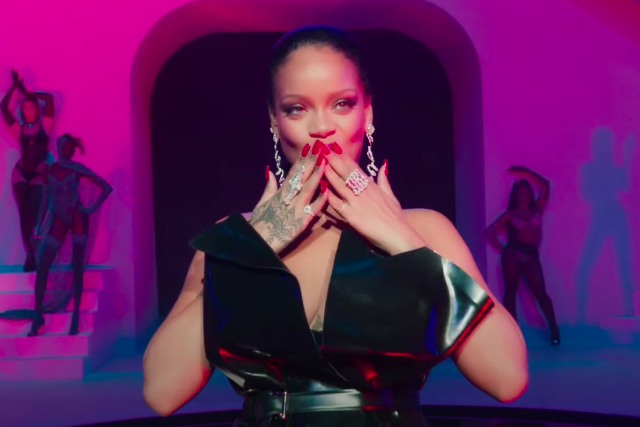
The queen returns, not with a new album, but with another fashion show. Today, Rihanna dropped the teaser for the upcoming “Savage x Fenty Show Vol. 2” and just like last year, it’s going to be exclusively available on Amazon Prime. So, pen in the Oct. 2 streaming date and get that subscription because you won’t want to miss the chance to see Riri onstage.
If you missed out on the first “Savage x Fenty Show” (which you can still stream on Amazon Prime) and all the internet buzz it garnered, prepare yourself for a lingerie fashion show featuring live performances. And no, we don’t mean musicians singing their hits in the middle of the catwalk with little to no interaction with the models. Expect to see something more like a concert where most of the models clad in Savage x Fenty are part of the choreographed performances instead of simply sashaying down the runway. In fact, the first show opened with a dance number from Rihanna.
The teaser for this year’s show boasts of a lineup that’s even more star-studded than before with musical performances from the likes of Travis Scott, Rosalia, Miguel, Ella Mai and a few others. Among the celebrities we’ll be seeing on stage are Lizzo, Normani, Rico Nasty, Willow Smith, Cara Delevigne, Bella Hadid, Demi Moore, Paris Hilton, Shea Couleé and Jaida Essence Hall. Maybe the teaser was right in saying, “Y’all not ready.”
Known for its diverse cast, we’re excited to watch BIPOC (Black, Indigenous and people of color) models of different sizes on the “Savage x Fenty Show Vol. 2.” Will we be seeing more persons with disabilities on the show too? We can’t wait to find out.
Photo screengrab from the “Savage x Fenty Show” teaser trailer
Follow Preen on Facebook, Instagram, Twitter, YouTube and Viber
Related Stories:
Here’s a PSA from Fenty Skin and Rihanna—skincare has no gender
Rihanna still doesn’t have an album, but she has a new song
Savage X Fenty’s first designer collab includes heart pasties
Model Slick Woods went into labor at the Savage x Fenty lingerie show
The new year brings a new Pantone Color of the Year: Peach Fuzz, a velvety gentle peach the company hopes to inspire an all-embracing spirit that enriches mind, body, and heart.
“A warm and cozy shade highlighting our desire for togetherness with others and the feelings this creates, Pantone 13-1023 Peach Fuzz presents a fresh approach to a new softness,” Pantone writes in their announcement. “Subtly sensual, Pantone 13-1023 Peach Fuzz is a heartfelt peach hue bringing a feeling of tenderness and communicating a message of caring and sharing, community, and collaboration.”
If you’re looking to invite this Peach Fuzz energy into your life, here’s a list of peachy products (or close enough to it) you’ll want to check out.
Motorola’s Razr 40 Ultra in Peach Fuzz
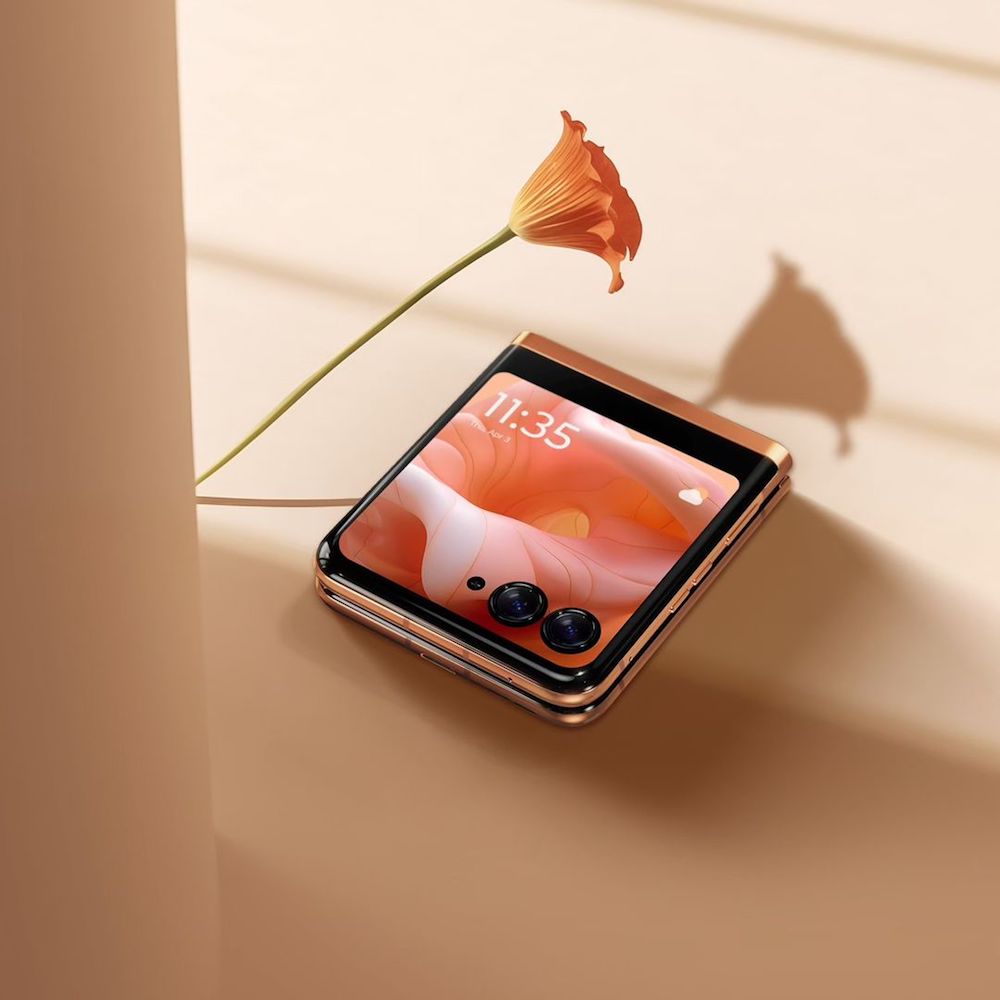
Been meaning to buy a foldable phone and decorating it with your anik-anik keychain? Motorola has partnered with Pantone to get their lightweight yet sleek and powerful Razr 40 Ultra in the peach tone. It has a 6.9″ pOLED display, HDR10+ format, Dolby Atmos audio, and 165 Hz refresh rate. Be on the lookout when it drops in Philippine stores.
Minsan’s Pigang-Pigâ bag

Fans of Dano Tingcungco’s leather brand Minsan will want to get their hands on the Pigang-Pigâ. Made from lamb nappa leather, it comes in colorways like Apa/Tablea. But act fast because they only come in one piece per style and per colorway. Minsan is beloved for offering customizable shapes with the help of the straps and drawstrings in its designs. And as the brand says, “Kasya laptop, Vogue, libro, damit, at iba pa” in the roomy Pigang-Pigâ.
Zarah Juan’s Boombox in Gumamela
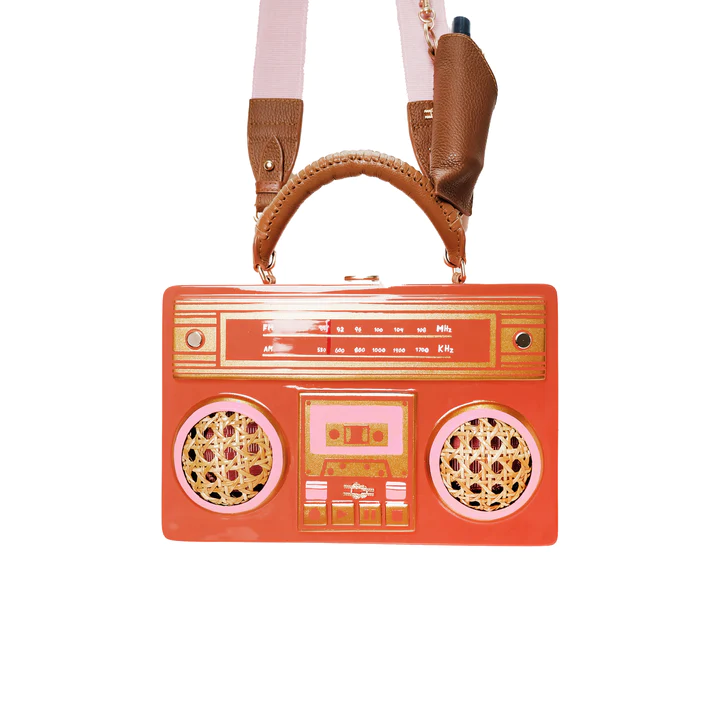
If you want to tick off getting your own Zarah Juan bag on your bucket list this year, consider this Boombox. The retro-chic bag is crafted with acacia wood, inabel fabric from Abra, a handwoven strap, wicker, solihiya, and leather. The bag is made together with artisans from Paete, Laguna.
Charles & Keith’s Bamboo Heel Tie-Around Pumps in Orange

Want to add a new shoe with an unusual design to your rotation? Charles & Keith has a pair of pumps with a bamboo-shaped 4.6-cm heel and tie-around straps. Looks modest, yes, but can still make a statement.
Good Dye Young’s semi-permanent Lighter Daze hair color in Peach Fuzz

Trust Hayley Williams and her longtime hairstylist’s haircare brand Good Dye Young to whip up the perfect shade of orange. This particular semi-permanent hair dye is in a peach and pink shade combination and has a cream base that acts as a hair mask with essential oil benefits. It’s also easy on the nose since it’s fragranced with bergamot essential oil and has a light citrus scent. The color can last from four to six weeks. You can cop yours at Beauty Bar.
Nature Republic’s By Flower liquid blusher in Grapefruit Cotton Candy
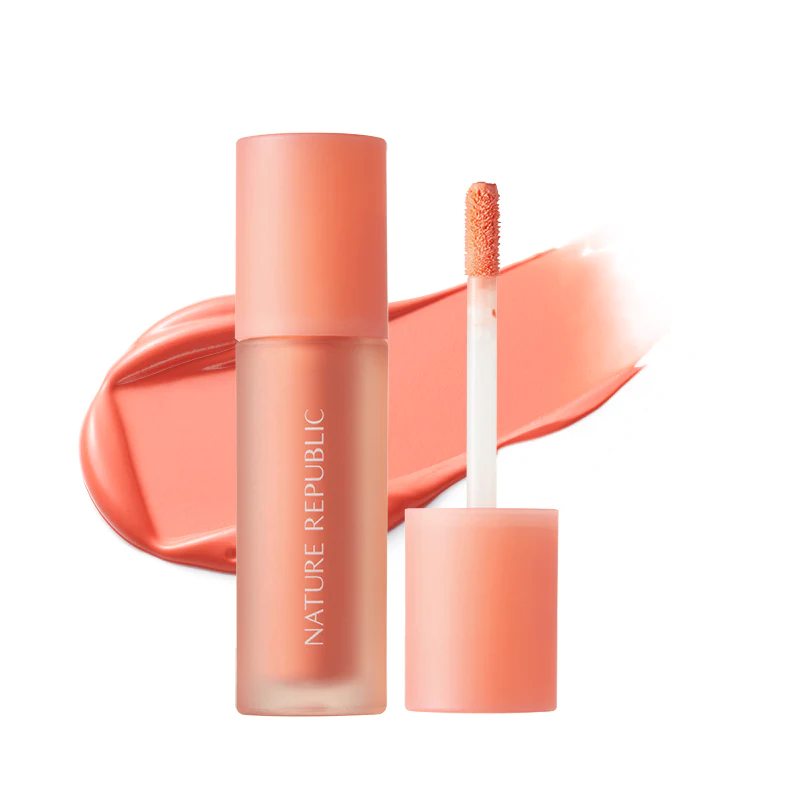
Nature Republic’s watercolor liquid blusher—with its moist soft cream base—can add a peachy glow to your skin. It has a round tip applicator and blends gently on the skin for a silky finish. It contains nourishing camellia flower extract, peach flower extract, and pink flower extract. The brand describes the blush as “colored like flower petals.”
Barenbliss’ Spark-tacular Party Blush in Peach Topaz
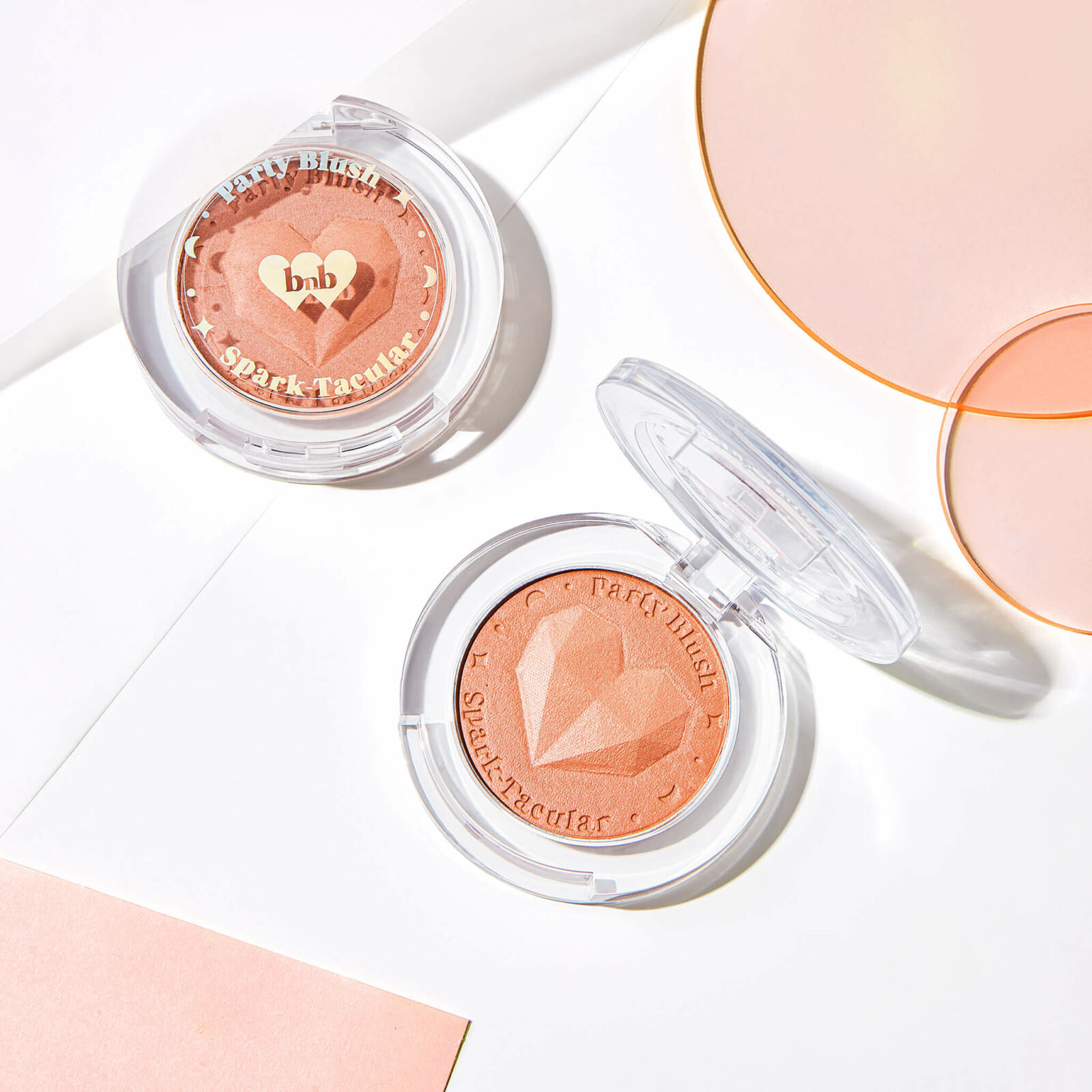
If you’re looking for a powder alternative with a sparkle, Barenbliss’ Spark-tacular Party Blush can give you a sun-kissed glow with its ginger brown and soft peach matte combination. It contains macadamia oil, shea butter, and vitamin E to keep your skin moist. And a fresh vanilla scent to boot.
Svenlo Boutique’s Pink Peach wash wristbands, hair tie, and headband

Need motivation to stick to your skincare routine this year? Maybe accessorizing can help. Svenlo Boutique has a peach-inspired trio to make face washing more fun. The hair tie and headband even have leaf details to make you feel extra cute. You can order yours on Temu.
Stabilo’s Swing Cool Pastel highlighter in Creamy Peach

Adding a touch of peach to your planner or notes is easy with Stabilo’s pastel highlighter. It has a slim design and a practical clip so it’s easier to bring anywhere. It has a chisel tip and provides four hours of protection against drying out, which is great when you’re in laser focus mode.
Art by Ella Lambio
Follow Preen on Facebook, Instagram, Twitter, TikTok, YouTube, and Viber
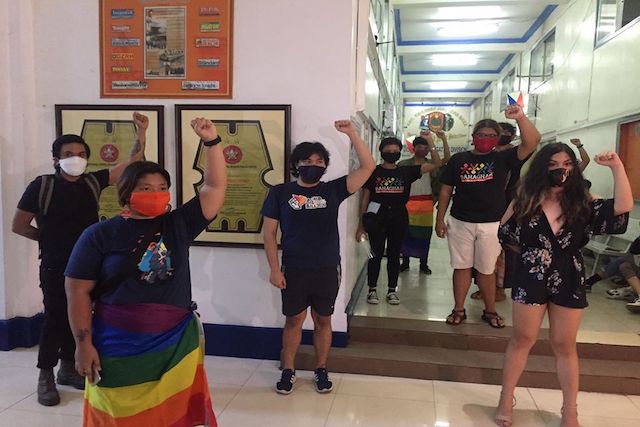
Pride is a protest and this morning, members of the LGBTQ+ community and its allies conducted a rally in Mendiola to celebrate Pride Month and to bring attention to calls ranging from #JunkTerrorBill to #NoToJeepneyPhaseout. Manila Police District (MPD) chief Brig. Gen. Rolly Miranda confirmed that a number of protesters were apprehended on Morayta Street. AlterMidya reports that 20 protesters were transported to the police station on UN Avenue, 10 from LGBTQ+ alliance Bahaghari, eight from Gabriela and two drivers.
UPDATE: The police nabbed at least 20 protesters, 10 from @Bahaghari_Natl, 8 from @gabrielaphils & 2 drivers. They are now being transported to the police station in UN Avenue. #FreePride20
— AlterMidya (@altermidya) June 26, 2020
An AlterMidya staff member said in a tweet that the MPD is claiming that a protester “sprayed something on an officer’s face” which prompted an arrest. However, the staff member adds that no such incident happened as evidenced by their live coverage of the event. In a video tweeted by GMA News, several officers in fatigue uniform are seen forcefully dragging a man out of a van to make their arrest.
Bago ang tensyon, nakapag-rally pa ang mga miyembro ng LGBTQ+ sa Mendiola. Aabot sa 30 tao ang naaresto ng mga pulis dahil sa paglabag umano sa mass gathering ngayong may GCQ sa Metro Manila. | via @Isa_Umali, @dzbb pic.twitter.com/y9MdyNggcI
— GMA News (@gmanews) June 26, 2020
Gabriela Women’s Party released a statement condemning the violent dispersal and mass arrest which reads, “We are enraged over this brazen showcase of police terror ironically against activists protesting fascism and tyranny, and against the looming enactment of the Anti-Terrorism Bill. We insist that there is now law prohibiting public assemblies during the implementation of the community quarantine. The constitutional right to peaceful assembly is not suspended even amid a health emergency.”
The group revealed that police “confiscated the keys and hijacked” protestors’ vehicles and “even manhandled Chriztina Madlangbayan, who is a legislative staff of Gabriela Rep. Arlene Brosas.” They further called for the immediate release of the detained protesters and launched the hashtag #FreePride20
https://www.facebook.com/GabrielaWomensParty/posts/1367246953485298
Bahaghari national spokesperson Rey Valmores-Salinas said on a live broadcast on the group’s Twitter account that the police have yet to inform them what violation against General Community Quarantine (GCQ) protocols they allegedly committed.
— Bahaghari #AchibDisBill (@Bahaghari_PH) June 26, 2020
Photo courtesy of Altermidya – People’s Alternative Media Network
Follow Preen on Facebook, Instagram, Twitter, YouTube, and Viber
Related Stories:
Pride is always a protest, now is a good time to remember it
This local org is pushing for safe spaces for this year’s Pride Month
Police arrested 7 protestors, not terrorists, in UP Cebu
Where’s compassion now? Two jeepney drivers still in jail a week after protesting for their livelihood
Two years have passed since we said our goodbyes to Makati nightclub XX XX and the parties it hosted such as techno queer celebration Elephant. While waiting for the return of our fave physical queer safe spaces, docuseries “Midnight Asia: Eat. Dance. Dream.” is giving us a chance to relive some of our best nights in the city. Yes, Elephant is one of the stops in the show’s nocturnal Asian tour.
The six-part documentary, which aired on Jan. 20, is described as an alternative night-time guide that celebrates the cities of Manila, Bangkok, Tokyo, Seoul, Taipei, and Mumbai by shedding light on their hidden gems and vibrant subcultures. Its final episode dedicated to Metro Manila featured Elephant as well as fellow nighttime community favorites FlipTop Festival, Lugawan sa Tejeros, Philippine Wrestling Revolution (PWR), and Tenement.
“Hanging out in regular nightclubs, it was hard to dress up because people would think that I’m weird. And a lot of my friends experienced that. We were the elephants in the room. So when we were developing this party, we decided to name it Elephant, because it’s a party for people like us,” says creative director and Elephant co-organizer Shahani Gania in the episode. Joining the drag queen in the segment is her co-organizer, production designer Paul Jatayna, and other performers.
View this post on Instagram
Elephant shared a clip from the show on Feb. 17 with the caption: “In case you guys haven’t seen it yet, Elephant is featured in the Netflix docuseries ‘Midnight Asia’ streaming now! Grateful to be included in this fine list of scenes and happenings here and around the continent. Feels really good to go back to that moment, dancing in @2020manila! Looking forward to what’s next!”
Apart from the party’s regulars, we also get to see PWR’s Crystal a.k.a the “Queen of Philippine Wrestling” under the spotlight in the episode.
This isn’t the first documentary released during the pandemic that’s centered on queer spaces and the found families that flourish in them. In 2020, Preen did a screening for writer and director Alexandra Cuerdo’s “Dancing On My Own.” The film is a letter to New York’s radical dance party made for and by queer Asian, Bubble_T.
View this post on Instagram
With the closing of multiple communal safe spaces, some of us have resorted to create “imagined” ones right in our homes. Singaporean filmmaker Charmaine Poh explores this in the short film “Kin.”
We’re glad that Elephant continues to get the love that it deserves and our fingers are that its triumphant return comes soon. The city just isn’t the same without our vogue balls, live drag shows, and underground parties.
Photo courtesy of Netflix
Follow Preen on Facebook, Instagram, Twitter, TikTok, YouTube, and Viber

The cat is out of the bag. Mariah Carey has revealed that she will be releasing her memoir on Sept. 29. If you thought the title would be “Memoirs of an Imperfect Angel” (her 2009 studio album), you guessed wrong. The legendary (you can’t deny this) singer announced that she has written “The Meaning of Mariah Carey” with activist and former fashion and beauty editor Michaela Angela Davis. I’m not sure what to expect from a self-written book that would chronicle more than her three-decade-long career. But, dahling, I’m pretty simple. I see Mariah, I click.
https://www.instagram.com/p/CCbJSjbpDMH/
On the pre-order link for the memoir, our queen left us a little message. “Though there have been countless stories about me throughout my career and very public personal life, it’s been impossible to communicate the complexities and depths of my experience in any single magazine article or a ten-minute television interview. And even then, my words were filtered through someone else’s lens, largely satisfying someone else’s assignment to define me,” she said. “I went deep into my childhood and gave the scared little girl inside of me a big voice. I let the abandoned and ambitious adolescent have her say, and the betrayed and triumphant woman I became tell her side.”
Mariah divulged that writing it was hard, humbling and healing and that she hoped that we glean a new understanding of the resilience of the human spirit from it. It sounds deliciously ambiguous but I’m also crossing my fingers for some juicy deets. Can you blame me?
I shimmied and cried through her albums. I laughed at her Tiktoks. I watched “Glitter.” I can’t imagine what else our versatile fave still has up her sleeves. Mariah stans will definitely be lining up (metaphorically speaking in 2020) to get the physical book AND the audiobook. Christmas is definitely coming early this year.
Photo courtesy of Pexels
Follow Preen on Facebook, Instagram, Twitter, YouTube, and Viber
Related Stories:
Mariah Carey finally got the Songwriters Hall of Fame spot she deserves
Mariah Carey’s ‘All I Want For Christmas’ finally tops Billboard Hot 100
Mariah Carey just won the bottle cap challenge
The Preen Team discuss pop queens’ recent releases aka our quarantine playlists
‘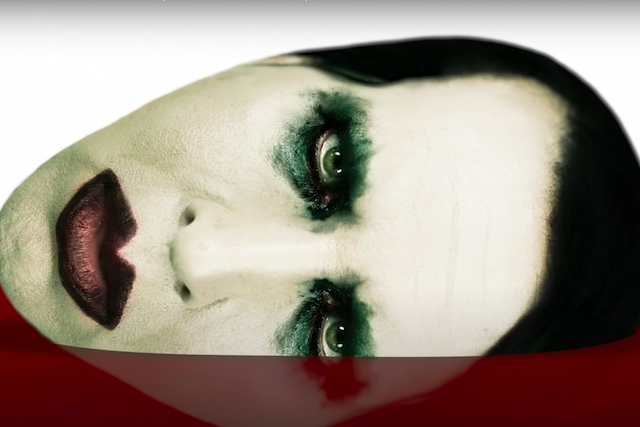
Since 2018, actress Evan Rachel Wood has spoken up about the alleged domestic violence that she suffered from a former partner so she can gather support for a law that would help sexual abuse survivors. In an Instagram post on Feb. 1, she named ex-fiance Brian Warner, known as rock musician Marilyn Manson, as one of her alleged abusers.
Wood wrote in the post: “The name of my abuser is Brian Warner, also known to the world as Marilyn Manson. He started grooming me when I was a teenager and horrifically abused me for years. I was brainwashed and manipulated into submission. I am done living in fear of retaliation, slander or blackmail. I am here to expose this dangerous man and call out the many industries that have enabled him, before he ruins any more lives. I stand with the many victims who will no longer be silent.”
View this post on Instagram
Today, Manson responds with his own Instagram post denying the allegations. “Obviously, my art and my life have long been magnets for controversy, but these recent claims about me are horrible distortions of reality,” said Manson. “My intimate relationships have always been entirely consensual with like-minded partners. Regardless of how—and why—others are now choosing to misrepresent the past, that is the truth,”
View this post on Instagram
Vanity Fair reports that “at least four other women posted their own allegations against Manson, detailing harrowing experiences that they claim included sexual assault, psychological abuse, and/or various forms of coercion, violence, and intimidation.” The publication also stated that “his representatives were not immediately available for a comment, but his team has ‘categorically denied’ similar accusations in the past.”
In light of this, Manson’s label Loma Vista Recordings has announced that it “will cease to further promote his current album, effective immediately” and that it has also “decided not to work with Marilyn Manson on any future projects.”
Wood has recounted in the past that she met Manson when she was 18 and he was 36. The two were engaged in 2010 before they broke up later that year. In a 2018 testimony before a House Judiciary Subcommittee for the passage of the Sexual Assault Survivors’ Bill of Rights, she said in part: “My experience with domestic violence was this: Toxic mental, physical and sexual abuse which started slow but escalated over time, including threats against my life, severe gaslighting and brainwashing, waking up to the man that claimed to love me raping what he believed to be my unconscious body.” She did not name her alleged perpetrator at the time.
Model Sarah McNeilly, one of the women who came forward with allegations against Manson, said in her statement: “I have been afraid to bring any spotlight upon myself as to avoid winding up in his crosshairs again. As a result of the way he treated me, I suffer from mental health issues and PTSD that have affected my personal and professional relationships, self-worth and personal goals. I believe he gets off on ruining people’s lives. I stand in support of all [who] have and will come forward. I want to see Brian held accountable for his evil.”
Photo screengrabbed from the “We Are Chaos” music video
Follow Preen on Facebook, Instagram, Twitter, YouTube and Viber
Related Stories:
Shia LaBeouf’s pattern of abuse is actually documented
Paris Hilton comes forward with boarding school abuse on her YouTube documentary
‘Ang Huling El Bimbo’ star is called out for non-apology video denying abuse allegations
On #HijaAko and her triggers—a conversation with a sexual abuse survivor
Statistics show that the Philippines has seen an all-time low in formal marriages for the last 50 years under lockdown. Many Filipinos in their 20s and 30s like myself have been struggling to see the appeal in getting married. Then again, maybe one of the biggest factors is how gay marriages and civil unions are still not legal in the country despite its changing demographic.
I’ve spent my youth feeling slightly hostile towards the idea of marriage but I’ve since warmed up to the idea. To make sense of this change in feelings, I spoke with one of my longtime best friends, 24-year-old project coordinator Pat. We’ve struggled similarly but Pat has since found herself a girlfriend, Andee, whom she has started calling her wife. What’s a sweeter way to celebrate Women’s Month than celebrating the love between two women?
As a kid, what were your thoughts on marriage? Did you see yourself as a future bride? I wasn’t the type to play bahay-bahayan with my friends and my thoughts on marriage were vague. My mind mostly focused on having a career.
I don’t remember being particularly interested in marriage. Although I had this notion that I should be married at 27 to 29. I’m not sure where the idea came from—probably from my family. Graduate from college by 20, have savings by 25, then prepare for marriage. I think it’s the same “plan” for people my age back then. It wasn’t “I want to be married,” but more like “I have to be married.” We were more conservative back then, so marriage was just “naturally” part of anyone’s plan and it was considered a milestone, if not an achievement.
Yeah. Marriage felt a bit like this thing that could take care of itself when you reached adulthood. But then, I grew wary of it as a teen. Did your opinion on marriage change as you were growing up?
Yes and no. People in relationships don’t have to be married to prove their love to the world. If not being married works better for their relationship, who am I to negate that? That has always been my belief. But yes in [terms of the type of person] I want to get married to.
“Now I get why they say it’s every woman’s dream to get married. Because I want to be with a woman too. Yes, it’s a dream of mine to be married to my girlfriend.”
When did you start identifying as gay? We weren’t exactly straight in high school but we still talked about boys sometimes…with distress [laughs]. Was there ever a moment that made you feel certain about your sexuality?
My sexuality has been a journey. Looking back, there was no exact point when I realized that I wasn’t heterosexual. My first crush was a lesbian named Janine. My parents were worried that I would be a “tomboy” which I never actually disputed. My first kiss was with a girl, although I considered it platonic. I didn’t care about labels. In high school, I started entertaining the idea of being with girls but I didn’t identify as gay or queer yet. At that point, I thought, “I’m straight, but I’m not opposed to the possibility that I like girls, too.”
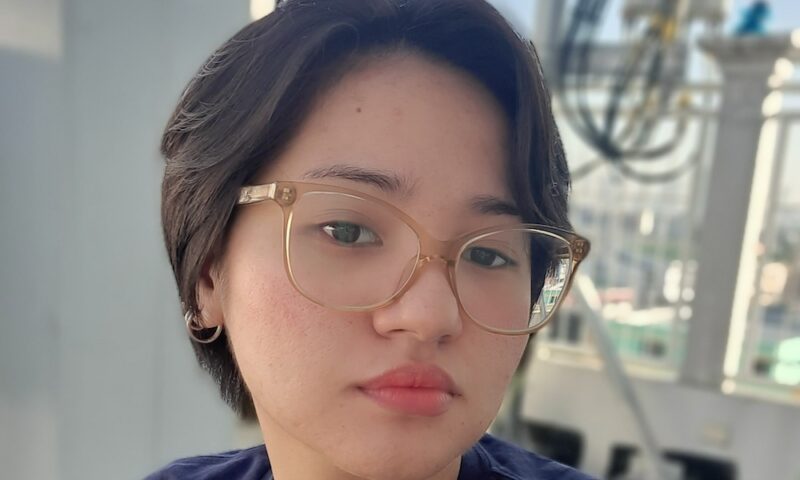
Then in college, people were more open. I thought I should be too. I started having crushes on girls. I identified as pansexual during freshman year. But I started identifying as bisexual since it seemed easier for people to understand. For years, I felt comfortable with being bi—until I didn’t.
Towards the end of my last year in college, I knew that I’ve started liking girls more than boys. Bi didn’t feel right, but technically I was still bi. I’ve since just called myself gay. I’ve struggled with not having a label for years, and in a way I still do. I kept telling friends and my partner that I don’t like guys anymore. I feel like the closest label is lesbian, but I don’t know if I really am one. What if this is just a very long phase? What if I turn out to be wrong and I end up disrespecting the lesbian community? I let people call me a lesbian, and I actually feel nice and warm and fuzzy when they do. So what’s stopping me? Internalized lesbophobia? Even my friends say they can’t picture me with a man. But I’m coming to terms with not having to label myself.
I relate so much. I’m also really wary of calling myself a lesbian but it just feels so right when I do. Pivoting back to marriage, did finding out that you were attracted to women instantaneously change your opinion on marriage?
Not right away. It was like this for me. I could get married to a guy. But I’d have to be so sure that I loved him and he loved me—that he accepts all of me. I have to be 100% comfortable with him. It will take a very long time before I even consider marrying him. But if it’s with a girl, I’ll marry them right away [laughs].
When it dawned on me that I like women exclusively, it was a eureka moment for me. Now I get why they say it’s every woman’s dream to get married. Because I want to be with a woman too. Yes, it’s a dream of mine to be married to my girlfriend (who is currently doing leatherwork as I answer these questions). I want to be a wife. I want to be her wife. I don’t say this only because I want to get married, but because I want to be married to her. Ano ba yan kinilig ako [laughs]!
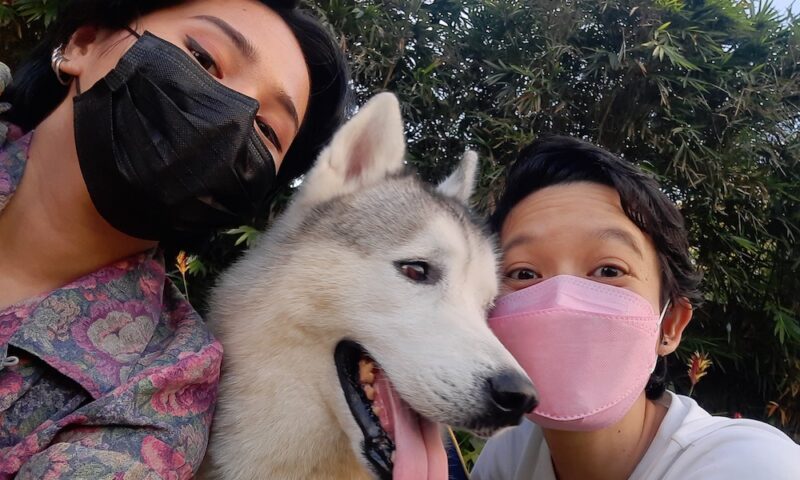
Grabe ‘yon! Napa-sana all na lang ako. But I’m so happy for you both! I love the conviction. Is there a difference between being in a relationship with/being attracted to a woman as opposed to being in one with a man?
I was never comfortable with it. In my mind, there were so many hurdles to conquer to be in a relationship with a man. In a way, I felt icky liking a man. I suppose my physical insecurities contributed to that.
But being with a woman also takes work. I had to accept that I have to open up to my partner if I really want our relationship to work. My partner did a lot of convincing for me to say things that I’ve never told and shown anyone. After surpassing every barrier, I thought “Will she still like me? Will she still stay?” I think I’m past those questions. What I’m trying to say is that every relationship takes work. But for me, being with a woman was still so much easier because I am proud and happy being gay. There’s no shame in me for liking a woman and being in a relationship with a woman.
Amen to that. The gays deserve to be proud of their relationships. It sucks but same-sex marriage isn’t recognized in the Philippines yet. What does being called and calling your partner “wife” mean to you?
Oh, it means a LOT. Personally, it means that we are both committed to each other and that we plan to be together in the future. The first time I called her my wife, I was honestly so scared that it might overwhelm her. But she said that she’s okay with it and she felt kilig. A few weeks later, she called me her wife too.
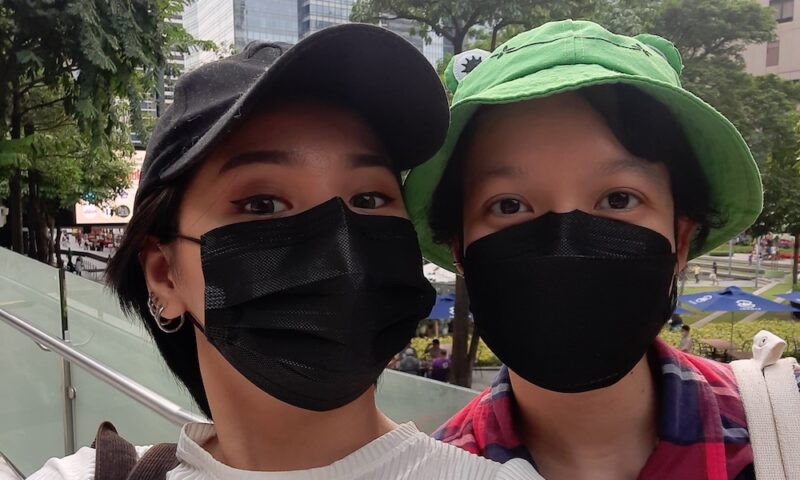
Hopefully, I’ll be a bridesmaid or a flower gay at your wedding or commitment ceremony. Any words of advice for lovelorn gays like me who are either afraid of or struggling to find themselves in a long-term, committed relationship?
Oooh, that’s a very hard question. I honestly think that I just got lucky. Finding a partner is already hard and finding a queer partner is even harder. And there’s a pandemic on top of that. That’s why I’m so happy my girlfriend and I had our first date literally two weeks before the lockdown.
I know it sounds cliche, but you really have to put yourself out there and take a risk. And during these times, you have to put in the extra effort. But also, don’t force yourself to be in a relationship just because you want to be in one. If you don’t really like the person, you’ll just both be miserable. Or I don’t know, maybe give the person you like a bunch of humanoid carrot postcard memes or a lecture about politics, and you’ll end up having a lovely partner, too [laughs].
Art by Pammy Orlina
Follow Preen on Facebook, Instagram, Twitter, TikTok, YouTube, and Viber
Marking the 48th anniversary of former Pres. Ferdinand Marcos’ declaration of Martial Law, we once again reflect on the parallels between the late dictator and fellow strongman slash family friend Pres. Rodrigo Duterte. From cronyism (how else can we explain the appointment of the individuals who do not meet qualifications for their posts?) to infrastructure projects that exacerbated the national debt, Duterte seems to be taking pointers from the Marcosian playbook.
The words “never again” hold an urgency, with the threat (real or not) of nationwide Martial Law hovering in the minds of many Filipinos. In order to avoid a repeat of the past, we have to examine and remember the atrocities and the sacrifices that led us to where we are now.
How much have we moved past the abuses of power, if at all? Here’s a list of Martial Law documentaries that might have missed your radar. Set some time to check out these snapshots of a Philippine revolt.
“Portraits of Mosquito Press”
On “Portraits of Mosquito Press,” Director JL Burgos shines a light on the state of the Philippine press under Martial Law. The term mosquito press was coined in the era and used as a moniker for small publications that released biting exposes and critiques. His parents, Joe and Edith Burgos, sought the help of a number of college editors and family members to publish the alternative newspaper We Forum at a time when Marcos administration had control over mainstream media.
The documentary contains interviews from former staff members of the family-run newspaper where they also recount how the state sought to silence them—Burgos’ brother, Jonas Burgos, was an activist and victim of enforced disappearance. In the trailer, Edita Burgos shares, “During the Veteran’s celebration, Marcos was holding on to a newspaper and said, ‘I will make the publisher eat this.’ He was holding a copy of our newspaper.”
You can watch the entire film on the documentary’s Facebook page.
“1081”
Kara David hosts GMA News TV Special “1081,” a documentary that goes into the declaration of Proclamation No. 1081 and how Filipinos suffered under authoritarian rule. It examines how Martial Law was justified as a means to bring peace and order, to redistribute wealth for the poor and to bring forth a New Society. It also dives into the slaying and detainment of opposition leaders, activists and journalists—along with the strict implementation of curfew and the shutdown of several media outfits.
David interviews political leaders, journalists, human rights victims businessmen, military officials and former members of the Marcos administration to set the record straight on what really happened during those years. Interesting fact: Her mother, Karina Constantino-David, was a Martial Law activist who was nearly arrested but ultimately wasn’t because she was pregnant with Kara at the time.
“A Rustling of Leaves: Inside the Philippine Revolution”
It’s not often that armed Filipino revolutionaries are at the center of a documentary and so, “A Rustling of Leaves: Inside the Philippine Revolution” is definitely a historical gem—one that is finally making its local debut after a three-decade-long wait.
Daang Dokyu festival director Jewel Maranan said in an interview, “In my opinion, no sharper and more in-depth analysis of our nation’s conflicts and contradictions has been made in film than this distinctive documentary by Canadian filmmaker Nettie Wild.” The documentary is exclusively available for streaming on the festival’s website for a limited time.
It features the likes of New People’s Army founder Kumander Dante, guerrilla fighter slash priest Father Navarro as well as “Anti-Communist Crusade” radio DJ Jun Pala and even Sen. Ronald dela Rosa, back when he was a young lieutenant. The film has won awards in several foreign film festivals so don’t miss your chance to find out why.
“Marcos: A Malignant Spirit”
Another entry from Daang Dokyu’s lineup is “Marcos: A Malignant Spirit.” The film hosted by ABS-CBN News’ Angelo Castro Jr. contains rare footage and recordings that look into “the inhumane manner in which Marcos and his henchmen systematically drained the economy.”
Expect to see samples from the Marcos depositions and U.S. congressional hearings such as the ones on Marcos properties worth millions of dollars that expose a “‘complex web’ of companies used to conceal these investments.”
If you know anybody who’s still convinced that the Marcos family didn’t commit plunder, this might be the thing that convinces them otherwise.
“Shapes of Crimson”
“Shapes of Crimson” is director EJ Mijares’ documentary on fellow progressive filmmaker and writer Bonifacio Ilagan. A student activist from the University of the Philippines during Martial Law, he was abducted and tortured in the ’70s. He is also the brother of enforced disappearance victim Rizalina Ilagan.
Apart from his recollections and that of fellow Martial Law survivors, we also get a glimpse of the leftist movement now. We see clips from mass demonstrations (in the trailer, we see Anakbayan chairperson Vencer Crisostomo giving a speech) and a funeral for an activist. It proves that the movement is still alive and kicking and that the struggle for basic human rights never really stopped.
Art by Dana Calvo
Follow Preen on Facebook, Instagram, Twitter, YouTube and Viber
Related Stories:
5 WLW POC films to decolonize your queer watch list
A cheat sheet to the 15 Filipino films coming to Netflix
The best journalism films to remind you that it’s more important than ever
Watch these films if you want to understand Martial Law
Still nursing a “True Beauty” and “Lovestruck in the City” hangover? We hear you. Luckily, we might not need to wait long for the return of our K-drama crushes Hwang In-youp and Ji Chang-wook. Netflix has announced the production of its original K-drama “The Sound of Magic” starring the two actors and leading lady Choi Sung-eun.
Based on the webtoon “Annarasumanara,” Netflix describes “The Sound of Magic” as a “touching music drama about Yoon Ah-yi, a girl who had to grow up too fast, and Rieul, a mysterious magician who, although grown-up, wants to remain as a kid.” Yes, there’s singing involved.
View this post on Instagram
Ji Chang-wook plays the childlike and charismatic magician Rieul who lives in an abandoned amusement park. Meanwhile, Hwang In-youp will take on the role of brilliant but slightly unsociable student Na Il-deung whose life transforms when Ah-yi and Rieul introduce him to the world of magic.
If you haven’t read the webtoon (which you can access for free if you plan to, BTW), AsianWiki has a synopsis that gives us more insight into the characters and the difficulties they face. Clueless about her parents’ whereabouts, high school student Ah-yi works part-time jobs to support herself and her younger sister. Despite the circumstances, Ah-yi remains a top-ranking student who just wants to graduate and find a permanent job. Classmate Il-deung regularly competes with her for top grades and, in the classic enemies-to-lovers fashion, they start harboring feelings for each other. Then Ah-yi meets Rieul, who stages magic shows to people who tell him they believe in magic.
Though we’ve yet to know whether director Kim Sung-youn (“Itaewon Class”) and writer Kim Min-jeong (“Love in the Moonlight”) are going to bring changes to this adaptation, what will probably remain are the fairytale-like elements and the potent discussions on mental health and economic struggles. Judging from the details we already know, we’re getting an “It’s Okay to Not Be Okay” vibe.
While the possibility of a love triangle isn’t completely out of the question yet, there’s a higher chance that the romance will be between Hwang and Choi’s characters. If you’re not really familiar with rookie actress Choi Sung-eun, we’ve got you covered.
Her first acting credit is a supporting role in the 2019 movie “Start-Up” (not to be confused with the K-drama) about a reckless guy who gets into trouble when he enters a private loaning business.
She also had an eye-catching supporting role in “Beyond Evil,” which stars Yeo Jin-goo (who you might know better from “Hotel Del Luna”).
She also nabbed one of the lead roles for “SF8: Joan’s Galaxy,” a sweet sci-fi story about two girls that we (and some folk who’ve watched it) are convinced is totally sapphic.
We don’t have a date yet for the series premiere but do you think Choi Sung-eun and Hwang In-youp would make for a great on-screen couple?
Photo courtesy of Netflix
Follow Preen on Facebook, Instagram, Twitter, YouTube and Viber
Related Stories:
‘True Beauty’ should come with a trigger warning
ATEEZ and SF9 members join a K-drama to rival ‘Dream High’
Kang Daniel is making his acting debut on a Disney+ show?
Which K-dramas reigned supreme in 2020? We’ve ranked them
An aftermath of the political blunders under six-month lockdown is how a lot of Filipinos have begun actively seeking the guiding voice of progressive collectives, either to get more political or simply revel in a brand of comfort that hinges on solidarity rather than detox and detachment.
One such group is Gantala Press, an independent feminist literary collective based in Metro Manila. We got to chat with its team on the subversion of independent publishing, the power of collaboration and the how-to’s of setting up feminist groups in your chosen industry.
Hi, Gantala Press! How is the team doing these days? I saw on the organization’s Instagram that you recently acquired a couple of books for your collection. Did you guys close up shop at one point during quarantine?
Hello! We’re okay, but we’re agitated, angry and anxious about what is happening to our country. Most of us have day jobs and, like the rest of Metro Manila and the Cavite-Laguna areas, are working from home. We get by with a little help from one another, sharing useful links and posts on social media, holding educational discussions on topics such as feminist theories and kamustahan sessions on the weekends.
We were set to launch a feminist space/library/shop last March but the pandemic happened so we had to suspend all plans related to it. We also had to hold off accepting online orders of our books and shirts as a health and safety measure. But we have been producing regularly, writing statements on issues, curating mini-exhibits on Instagram and even publishing two digital zines during the pandemic.
We’re glad that Gantala Press is still standing strong. Can you introduce the organization to our readers and share with us the type of work that you do as a Filipina feminist press?
Since Gantala Press’ formation in 2015, we have produced books, anthologies, comics, cookbooks and zines that center on women’s issues and narratives. We collaborate with women’s groups and art collectives in organizing events and discussions on women, independent publishing and worker/food/agrarian issues.
Gantala Press began in response to the underrepresentation of women in literary institutions such as workshops, seminars, anthologies, etc. Through the years, we’ve redirected our work towards documenting, through literature and publishing, women’s issues and exposing their struggles. More and more we’ve committed to use what resources we have in publishing the writings of women from the basic sectors—peasant women, workers, the urban poor; and amplifying the collective voice of women.
I read that you donate part of your earnings to projects that support victims of state violence and that all your sales go to publishing projects for long-silenced communities. Can you tell us more about this?
Yes, we’ve contributed sales of our works to various causes almost since our first book. We’ve contributed to fundraising projects for internally displaced persons (IDPs) of the Marawi Siege in 2017; relief operations for peasant families and their children; bailing out wrongfully arrested activists, among others.
We’ve donated our books to women’s libraries and Lumad schools. These are simple ways of giving back to the communities who are ultimately the source of these books. The books we publish are their stories; it’s wrong for us to profit from them. Our flexibility as a non-profit small press allows us to publish the stories of communities, often written by the communities themselves; stories that mainstream publishing or mainstream media would not be interested in or would take a longer time to publish.
In a talk delivered by Faye Cura on small press activism in the Philippines, she mentioned that when she was trying to set up Gantala, there were people who asked why it wouldn’t publish feminist works by men. Can you share with us the reason behind this decision?
We feel that men take up most of the space that is available in any given field, especially literature and the visual arts. As a simple example, there is only one woman writer and zero woman visual artists among the National Artists of the Philippines (a cultural institution that has to be questioned and critiqued as well, by the way). Even now, panels in writing seminars or webinars can still be all-male. There was a visual art exhibition last year entitled “Epithets of a Woman” which featured artists who, except for one woman, were all men. Men are already where they need to be in terms of advocating feminism. Kelley Temple articulates it best: “Men who want to be feminists do not need to be given a space in feminism. They need to take the space they have in society and make it feminist.”
This is not to say that we are excluding men or the idea of working with men. Our husbands and partners have been supportive of us, taking care of the children while we attend rallies or events and sharing equitably in the housework. We’ve worked with male artist friends in coming up with illustrations, layouts, publication materials; one of our cookbooks was written by a man (although the recipes were by women) and we’ve published a few poems by men in one of our anthologies. Some of our closest friends and collaborators in the small press and arts communities are men. We can’t seem to avoid men in the struggle for true liberation.
Would you say that small, independent publishing is subversive in nature? How closely knit is it with activism?
It can be subversive in nature, because small, independent publishers, especially those who do not intend to be big and to eventually join the mainstream, often strive to work against systems of power that oppress the majority, mainly capitalism and the profit economy. Because small and independent publishing usually does not operate mainly for profit, it is freer and braver to tackle non-commercial or unpopular issues, which are ultimately political issues—imperialism and colonization, state repression, etc.
Small, independent publishing also often hopes to serve the community that produces the texts, working to develop readers among creators and creators among readers. Mainstream publishers, on the other hand, publish texts that will sell, primarily. They cannot afford to work with small communities with specific interests and concerns that may not appeal to popular taste.
You launched a kickstarter for the second book from your “Translating Feminisms” series called “Pa-liwanag.” Can you share with us what the chapbook will be about, who’s taking part in it and how we can show our support?
“Pa-liwanag” came about when the radical small press Tilted Axis Press in the UK asked us to put together a collection of works in English, either translated or in the original.
We included poems and prose by aspiring writers, professional writers and women who do not necessarily identify as writers such as an arrested food factory worker; an urban poor community leader; a former domestic helper; indigenous and peasant women. We also included writings by all-women groups or collectives. Topics cover gender, sexuality, romance, motherhood, the domestic, the body, the environment, history, state repression and activism.
Tilted Axis is raising money to produce “Pa-liwanag” and another collection of Indonesian works in translation. You can help by contributing to their Kickstarter and by buying the book!
You recently collaborated with Amihan and Rural Women Advocates to set up a live sewing session and embroider protest signs. Can you tell us how that went down?
Many members of Gantala Press are affiliated with Rural Women Advocates (RUWA), which is the volunteer corps of the Amihan National Federation of Peasant Women. “Magtahi ay di biro” was organized by RUWA and Amihan.
The first session was held in February. We made a banner against RA 11203 or the Rice Liberalization Law, which we then brought to the peasant sector’s rally on Valentine’s Day. We held another banner making session in July in response to the Anti-Terror Law. Again, we brought these banners to the SONA rally. The sessions were facilitated by Amihan chairperson Zenaida Soriano, who is an expert in the art of banner making or letter patching.
We realized that banner making is a powerful way of expressing resistance. It tests one’s discipline and commitment to finish a task and is a great way to connect and bond with comrades. Cloth banners are also cheap, friendly to the environment and last longer, unlike tarpaulin signages for example.
Our sewing experiences with Amihan and RUWA inform our own work as artists in Gantala. We tried sewing our own COVID-19 masks and have started to explore making cloth books or cloth zines.
Apart from “Pa-liwanag,” our upcoming publications include “MAGBUNYI! 30 Taon ng Notre Dame de Sion sa Pilipinas,” a comics anthology on the lives of the progressive activist Sisters of The Congregation of Our Lady of Sion, including Sr. Patricia Fox and a collection of speculative fiction in Filipino. We’re also talking with feminist associations and small presses from other countries for future collaborations.
Do you have a message for other women who aspire to set up a feminist group for their industry?
Start small. You can start organizing with friends, family and co-workers. Read and discuss a book written by a woman, watch and discuss a film directed by a woman, dissect a meme featuring a woman, analyze a news article involving women, hold sewing or drawing sessions together. When discussing, give each one enough time to speak. Listen carefully to what each one has to say.
We would like to think that events in recent years, such as the massive anti-neoliberal protests in Chile and Ecuador among others, the protests in Hong Kong against China’s imperialist projects, the global climate justice strikes, the Black Lives Matter movement and particularly in the Philippines, people’s actions against Duterte’s notorious anti-poor drug war and fascist attacks against activists, which have become more vicious during the pandemic, have opened the eyes of many on the injustices in our society.
As women creative workers, we have experienced similar injustices. We are all in precarious economic situations because of a neoliberal economy that prioritizes corporate profits over the people’s welfare. We have experienced sexual violence in various settings. Peasants and laborers, especially women, experience far worse. While social problems seem too complicated and deep-rooted to change, working with women from the basic sectors have taught us otherwise.
To aspiring feminist groups, we would like to emphasize the importance of organizing ourselves and linking up our struggles with the struggles of women from the basic sectors. Beyond representation or space in the creative industry, let us fight for the emancipation of all women from all forms of oppression—from the oppression of feudal relations, capitalism and imperialist powers.
Art by Tricia Guevara
Follow Preen on Facebook, Instagram, Twitter, YouTube and Viber
Related Stories:
This mommy teacher bares her fears for the upcoming school year
Art is visible dissent for the poets of this Anti-Terror Bill collection
Filipina authors that you must read at least once in your life
Which Filipina heroine are you most like? Take this quiz to find out.
As an avid consumer of K-media, learning how to speak in Korean has been on my to-do list for so long but I lack the motivation to go through with it. I figure that the subtitles and lyrics translations are there so why force my remaining brain cell to work overtime, you know? Today, Big Hit Entertainment announced a new project that might just change my mind.
On the newly created Twitter account for Big Hit Edu, the company posted the official trailer for the “Learn! KOREAN with BTS Book Package.” In the animated video, an ARMY catches a BTS livestream but struggles to understand what the members are saying and feels sad because she couldn’t send type in her message in Hangul. It’s a common enough problem that I know a lot of K-pop fans can relate to.
[Learn! KOREAN with BTS Book Package] Official Trailer 1
I don’t know what you’re saying…
The only thing that I can do is sending these hearts…
Coming Aug 24#Learn_KOREAN_with_BTS#BTS #방탄소년단 pic.twitter.com/SAKb8StJD0— HYBE EDU (@HYBE_EDU) August 10, 2020
The book package will be available on the Weverse’s, Big Hit’s multimedia platform, online shop on Aug. 24. We’ll have to wait for more details but I’m curious to see how similar it will be to the previously released “Learn Korean with BTS” video series which featured clips from the group’s variety show and behind the scenes specials. Will we be learning Korean by studying their previous messages to fans, transcripts to their videos or even their speech at the United Nations?
While we’re exchanging guesses, let’s also take this time to appreciate another cute BTS goodie: the first Tiny Tan animated short with its “Honey, I Shrunk the Kids” vibe.
[TinyTAN l ANIMATION] – Magic Door
One unusual day, they suddenly came to my life!
#TinyTANhttps://t.co/YbHq9Hd78m
— TinyTAN_official (@TinyTANofficial) August 8, 2020
Photo screengrab from the “Learn! Korean with BTS” trailer
Follow Preen on Facebook, Instagram, Twitter, YouTube, and Viber
Related Stories:
BTS’ surprise summer single will be in English
Filipino BTS ARMYs on being the black swans of standom
K-pop industry silent on #BLM? BTS begs to differ
6 platforms for a newbie language learner



